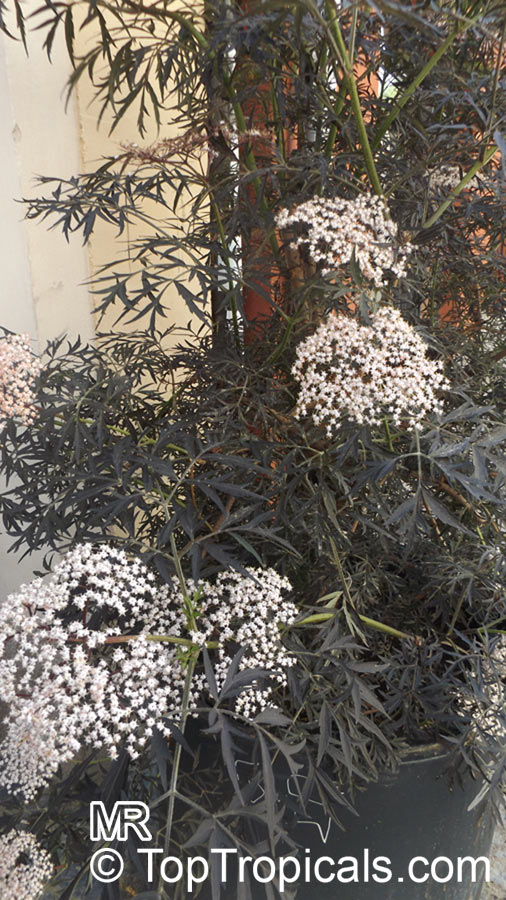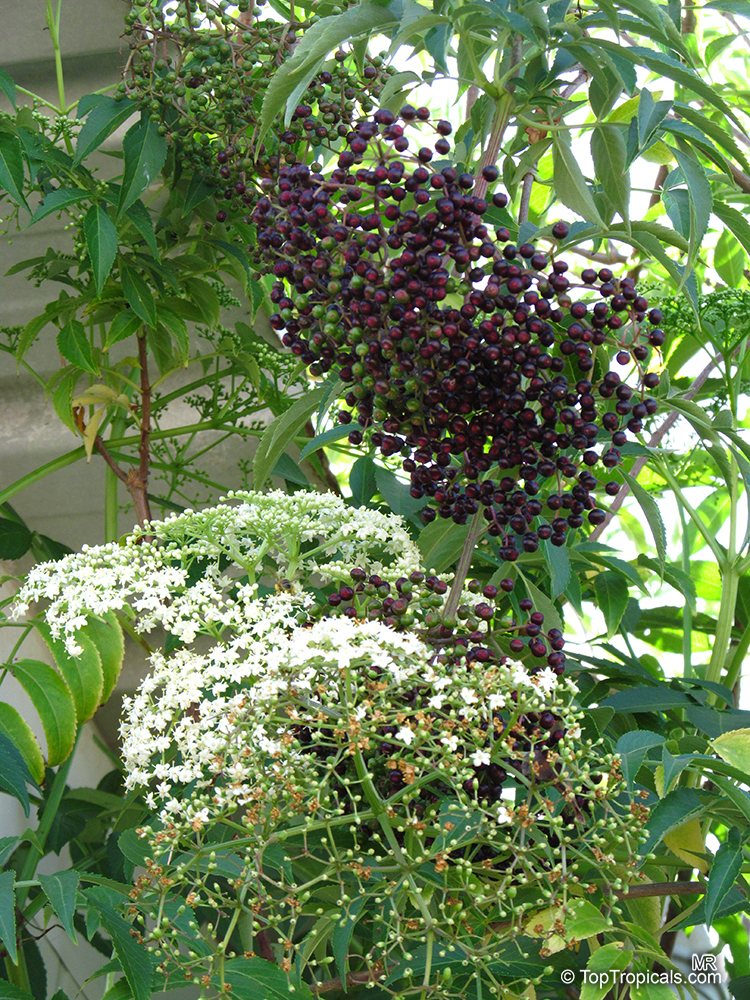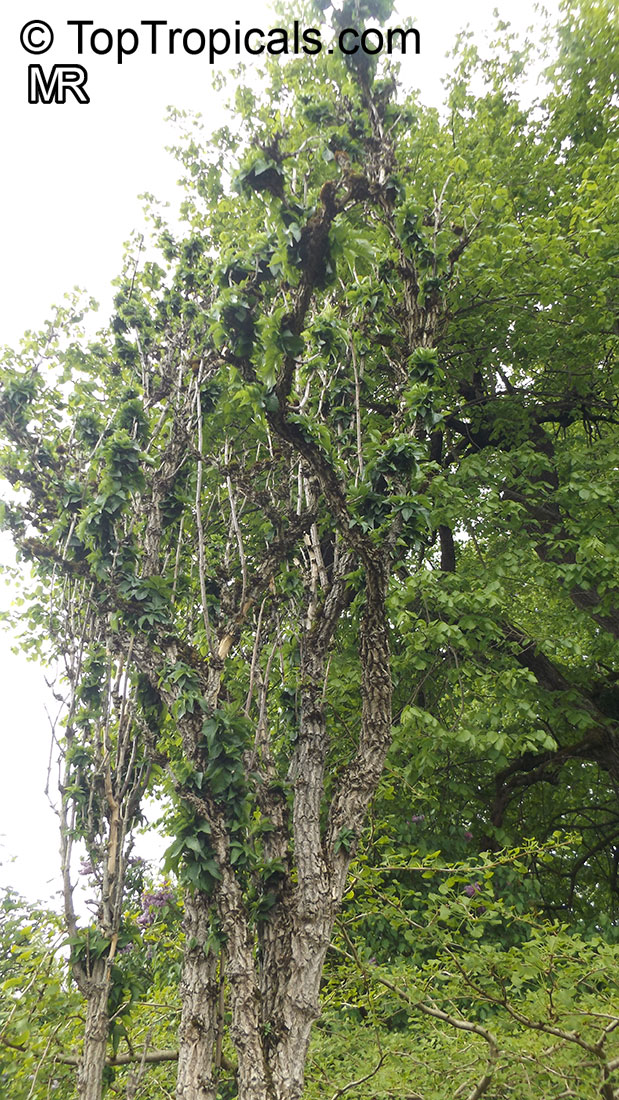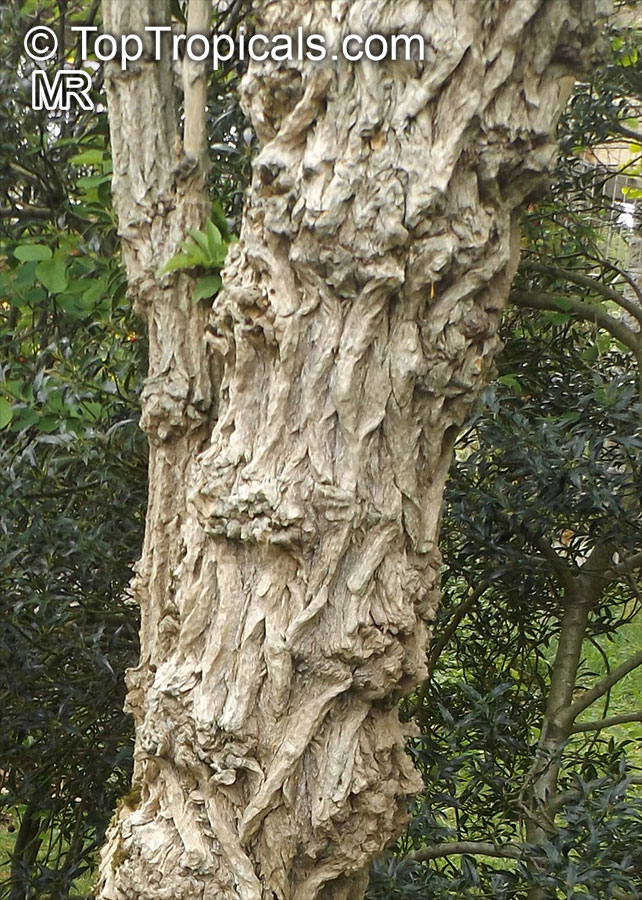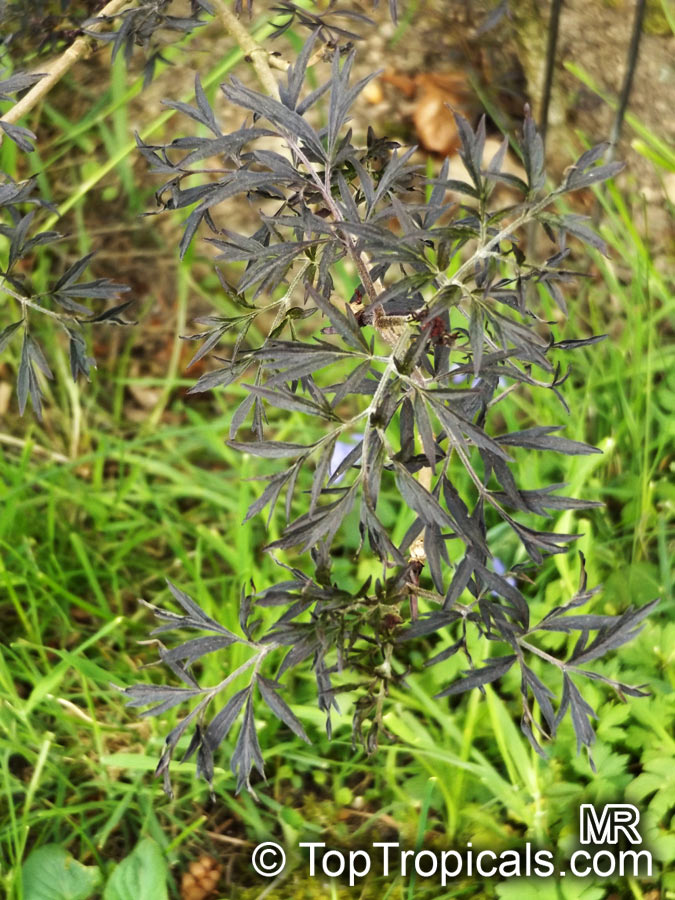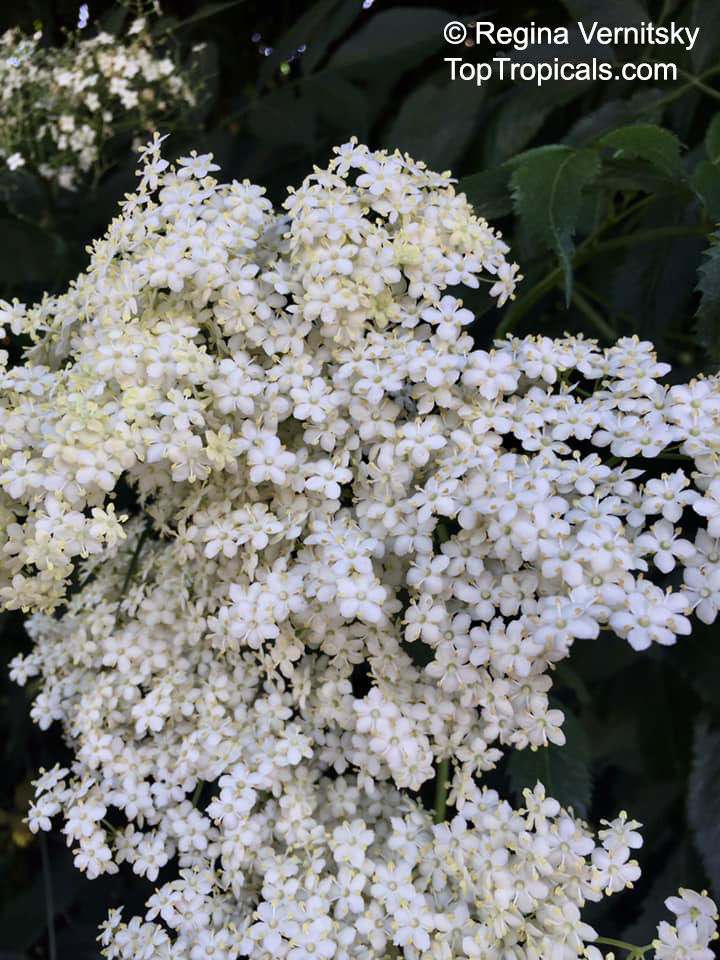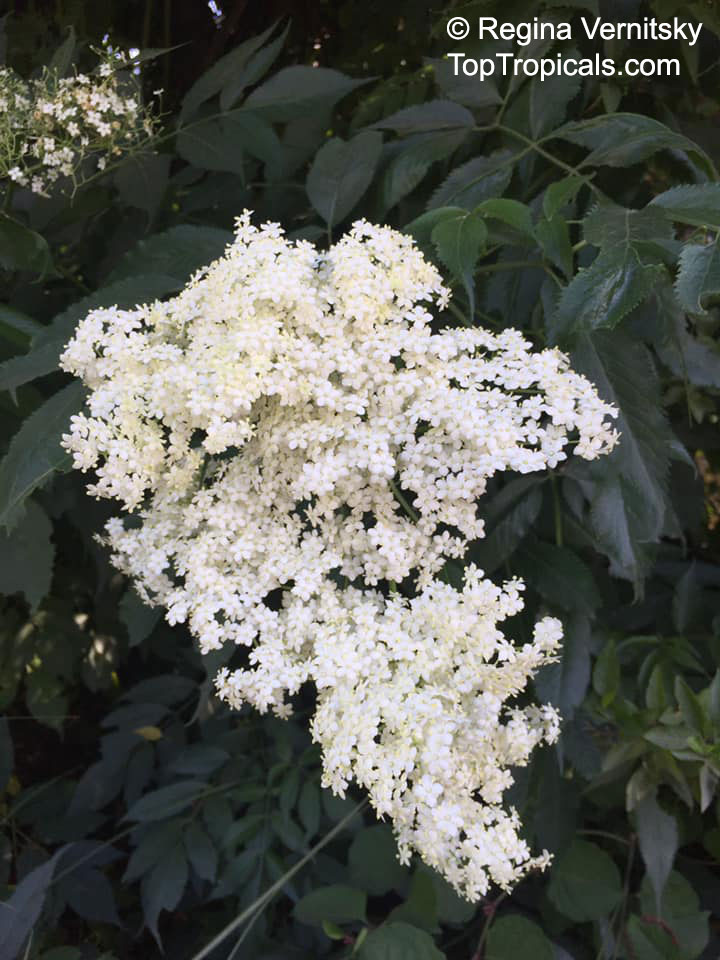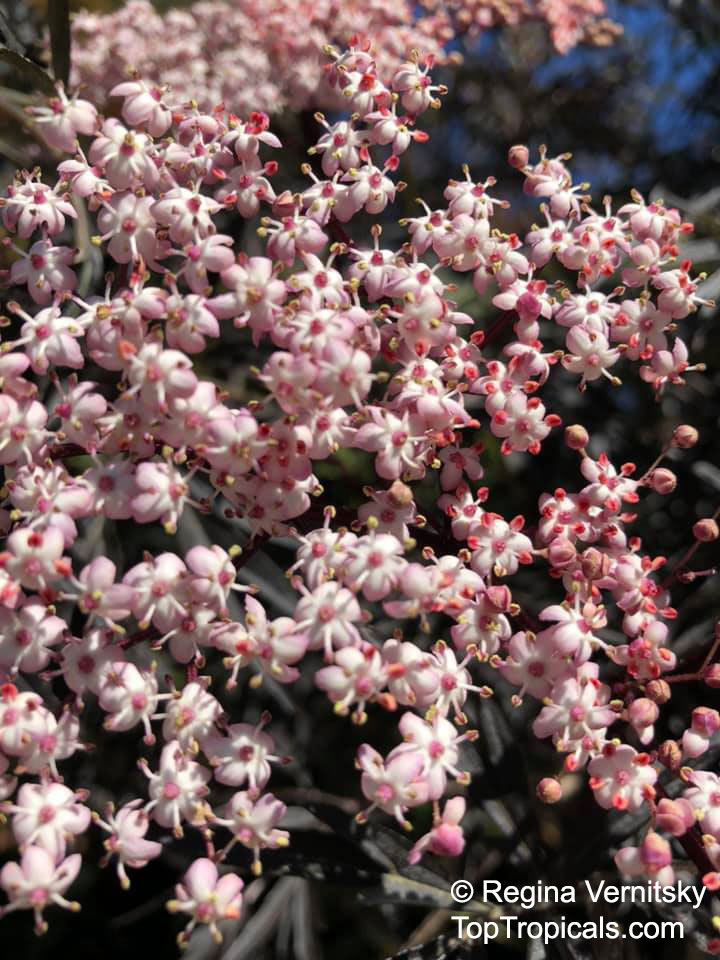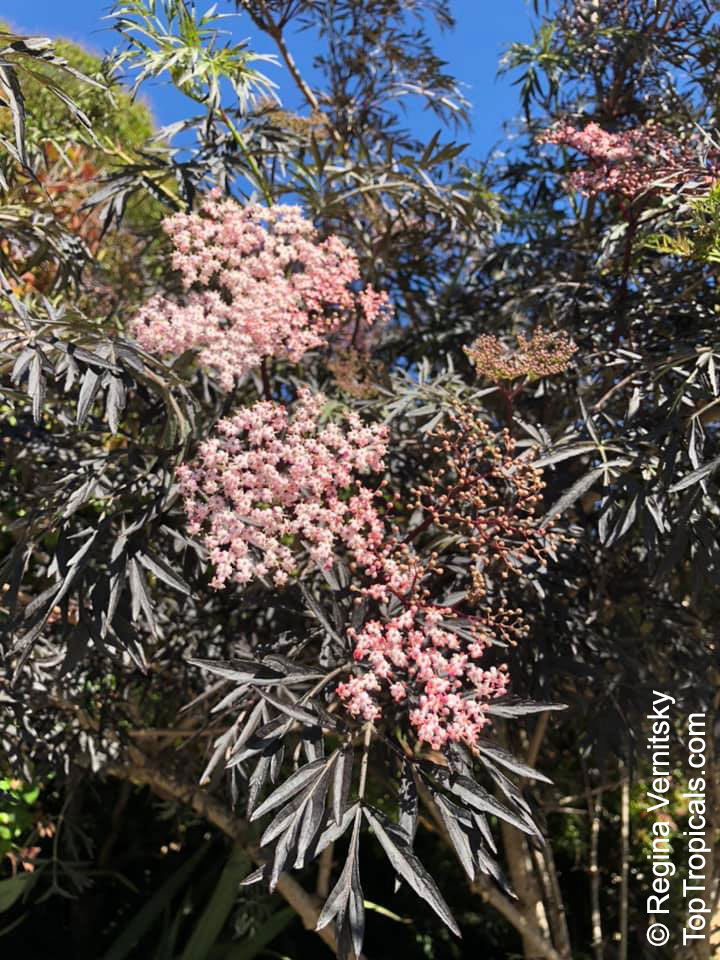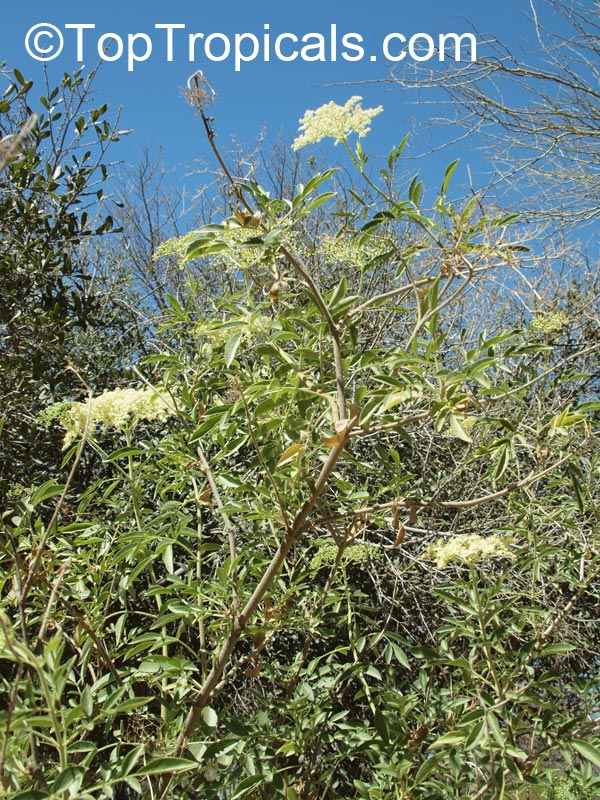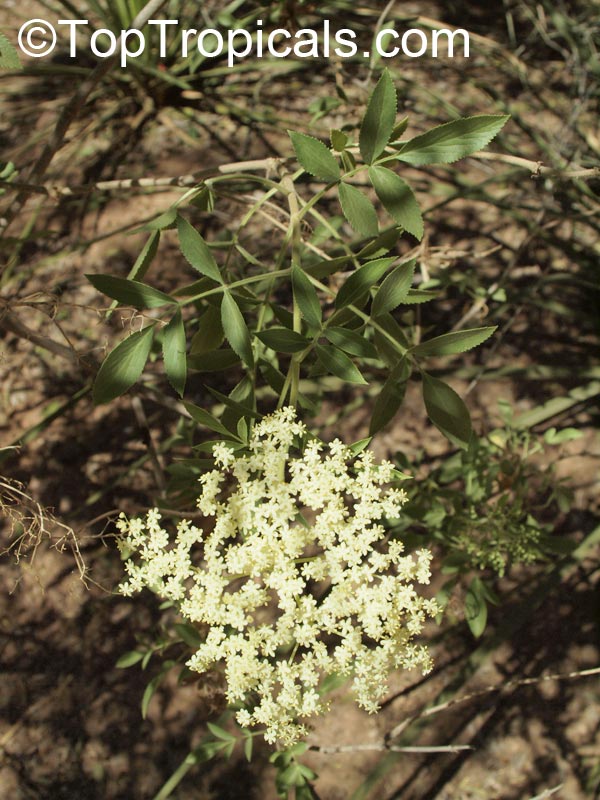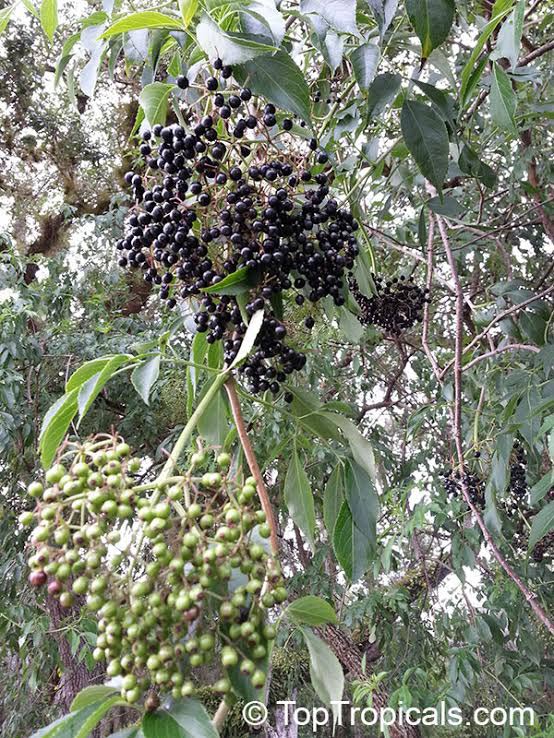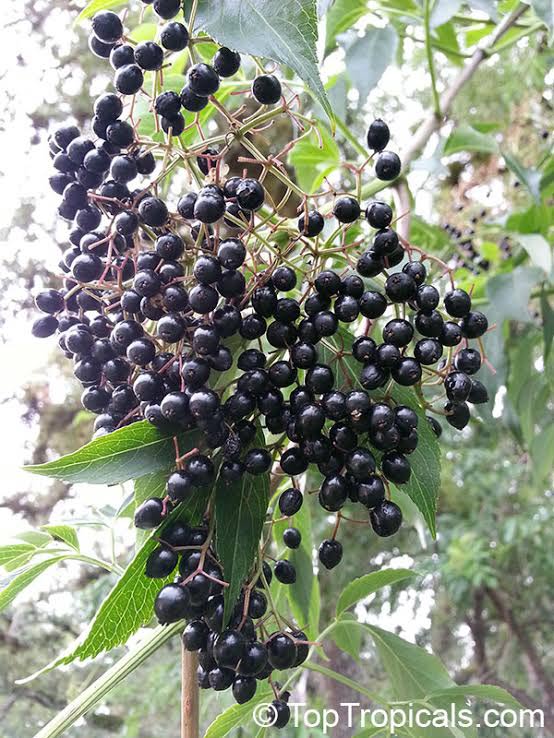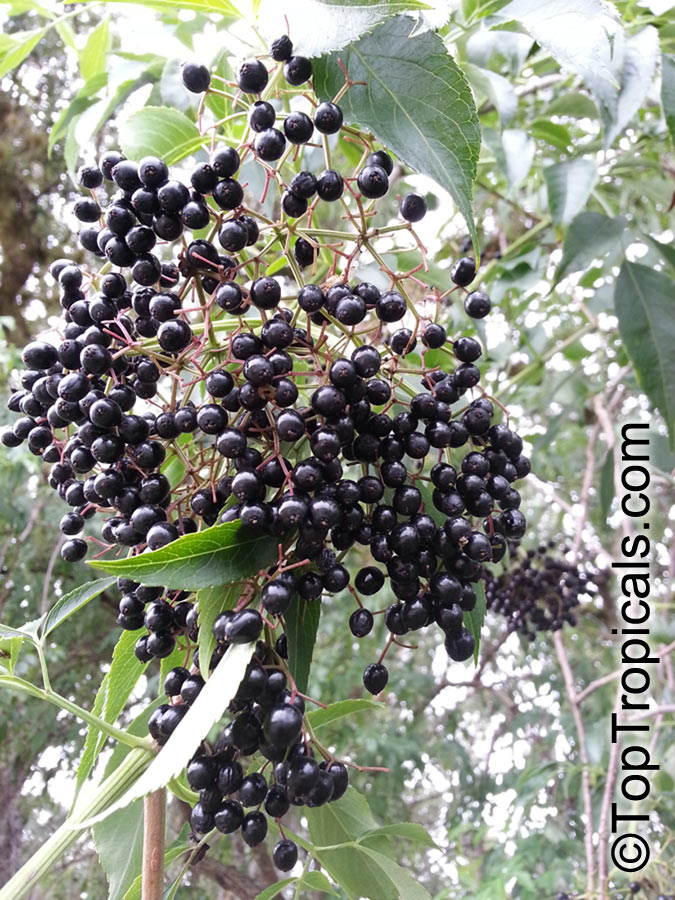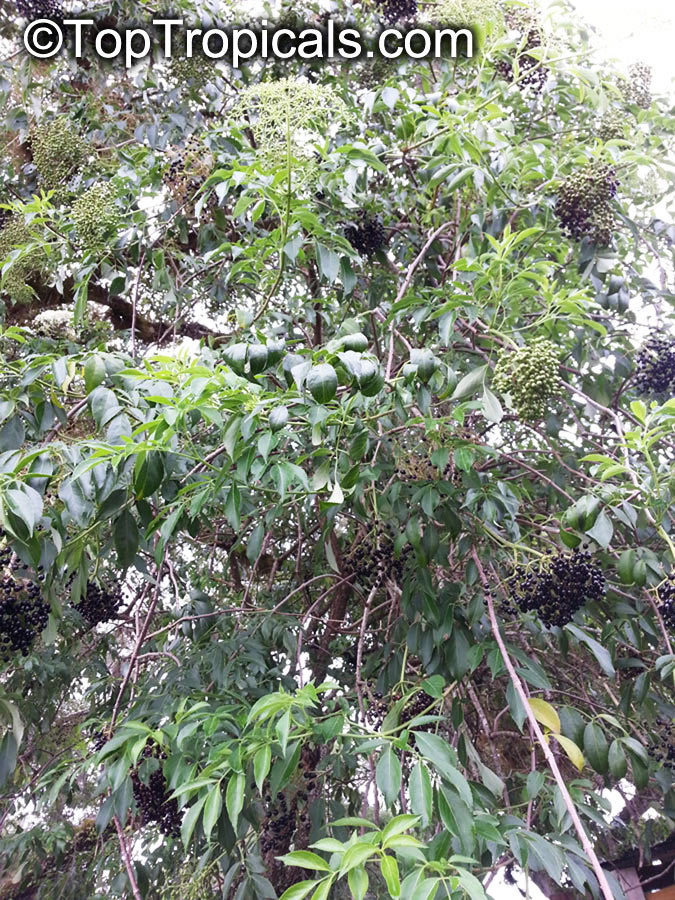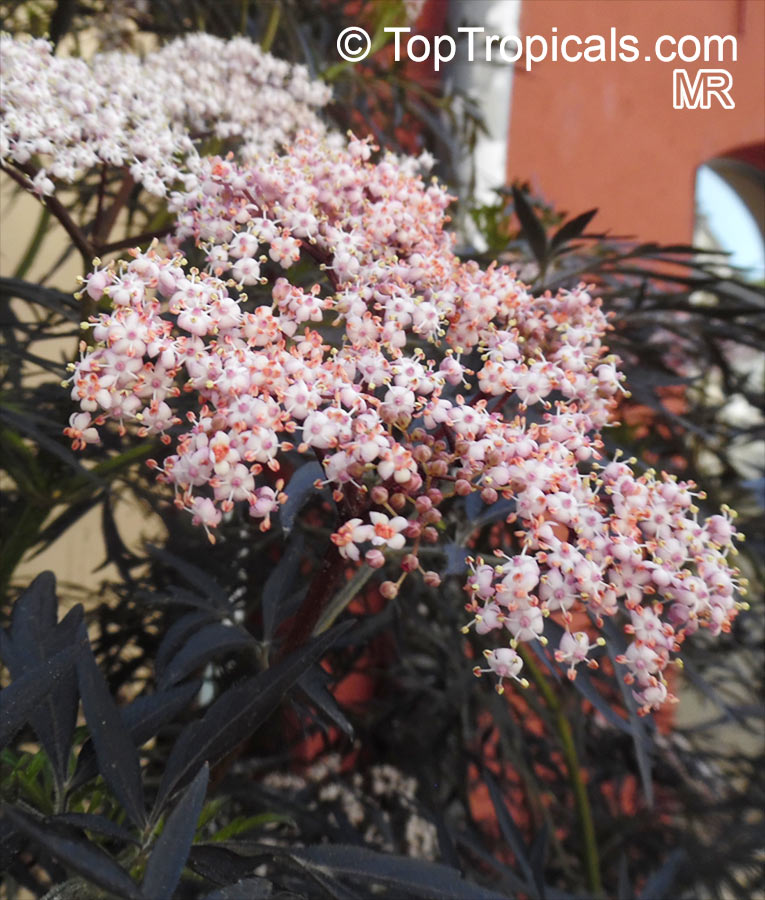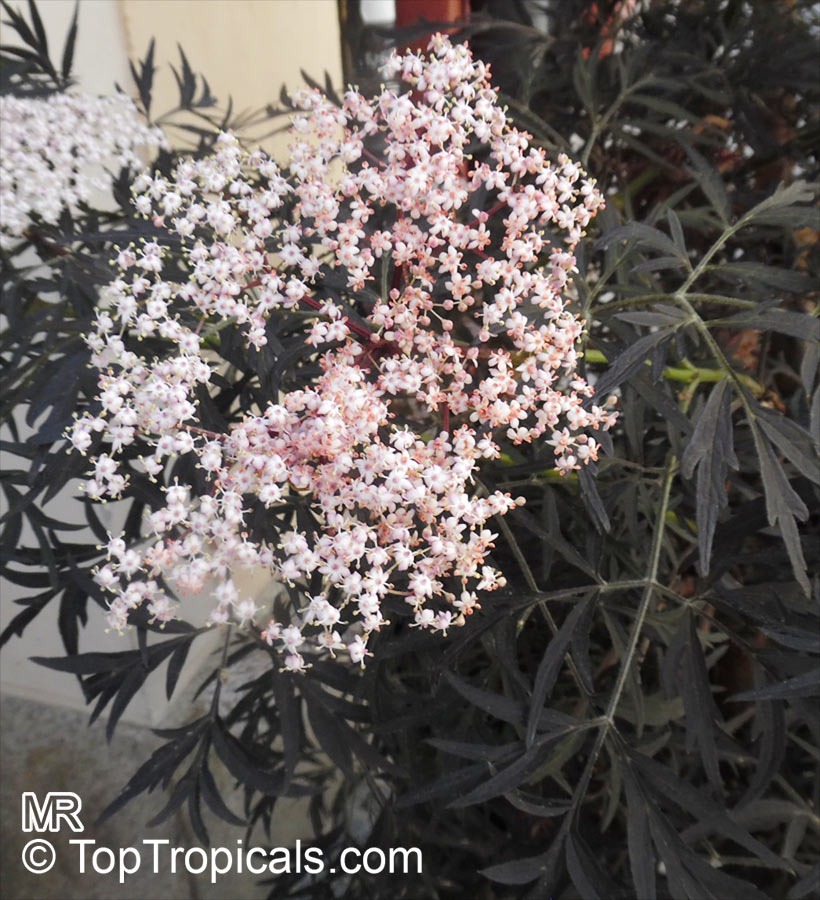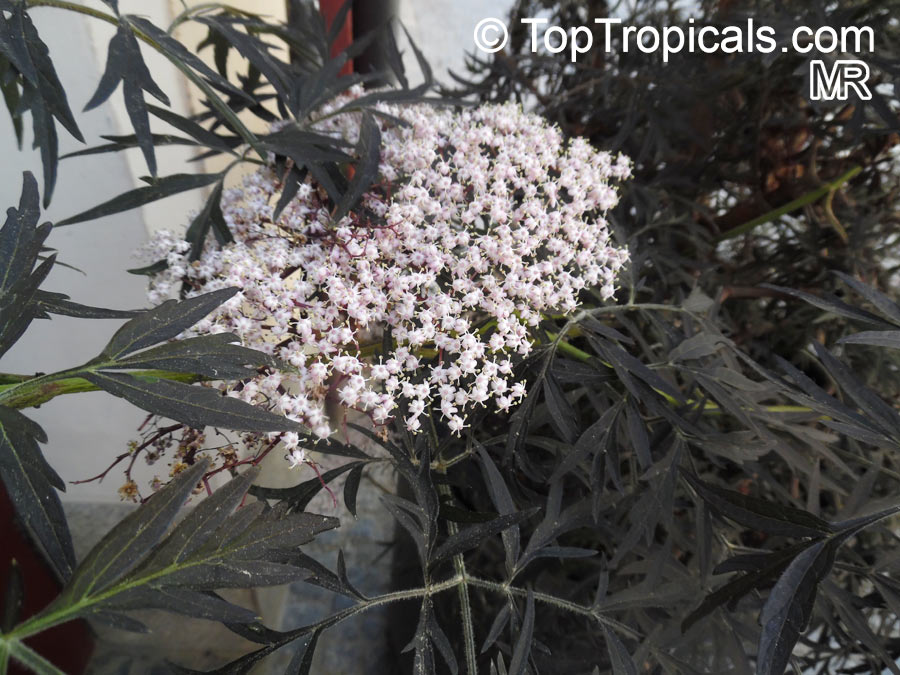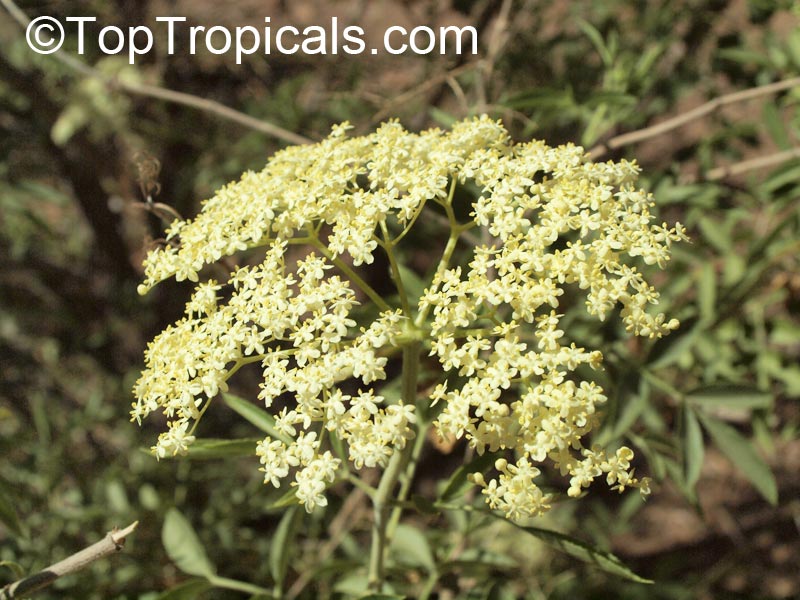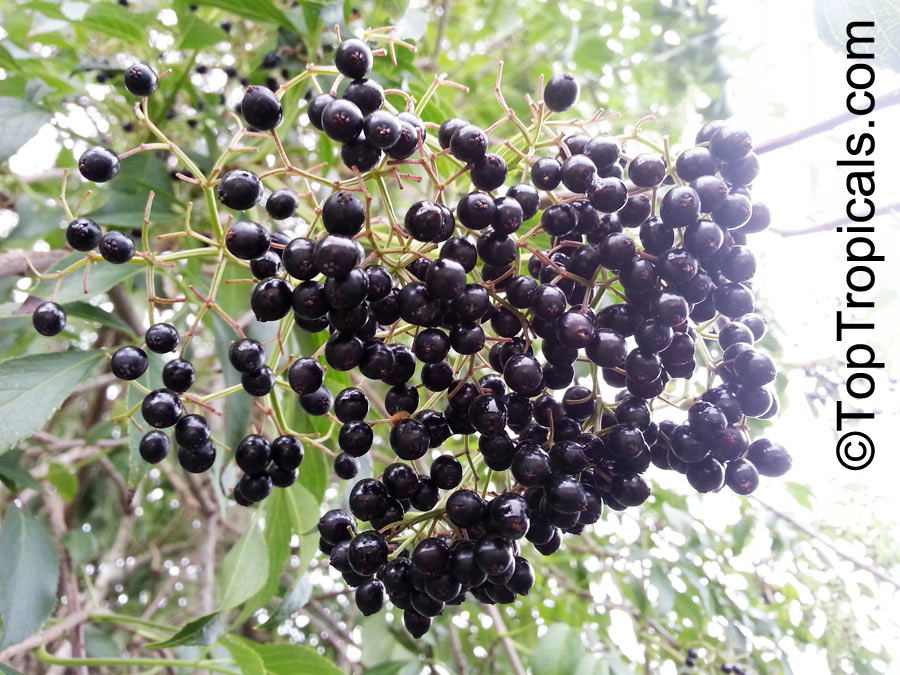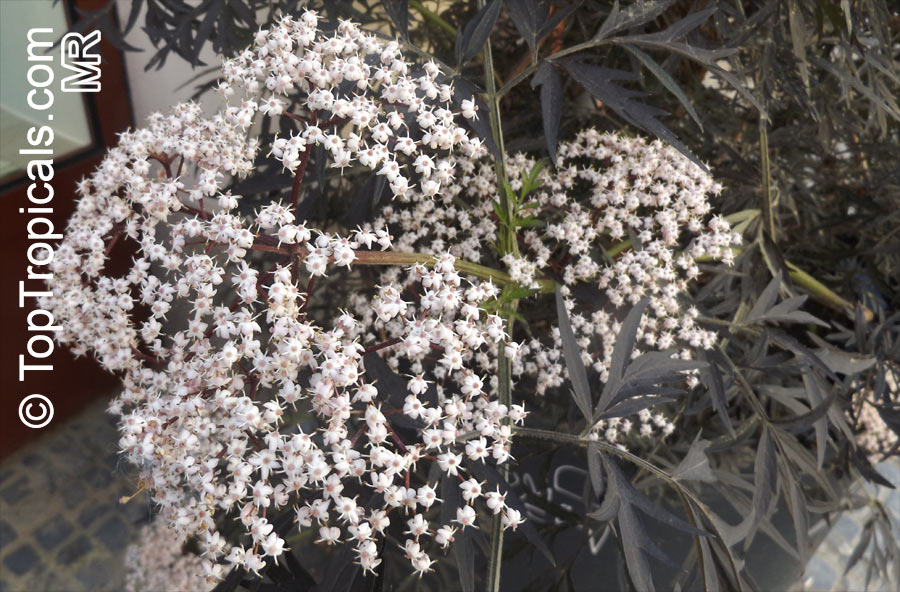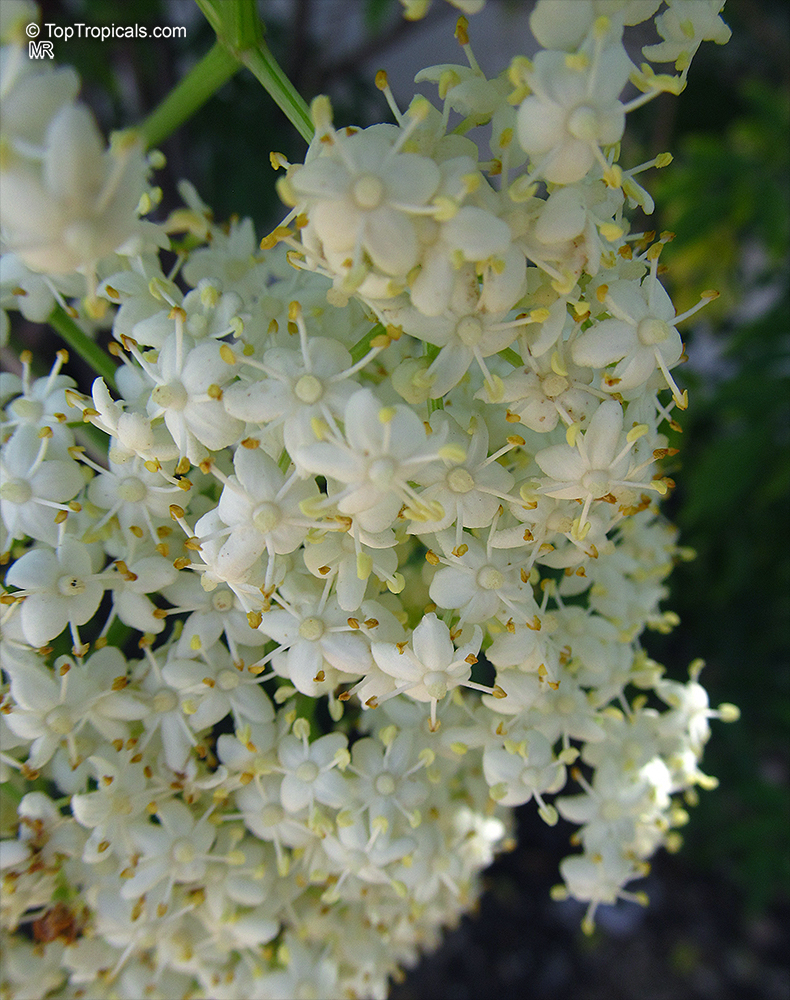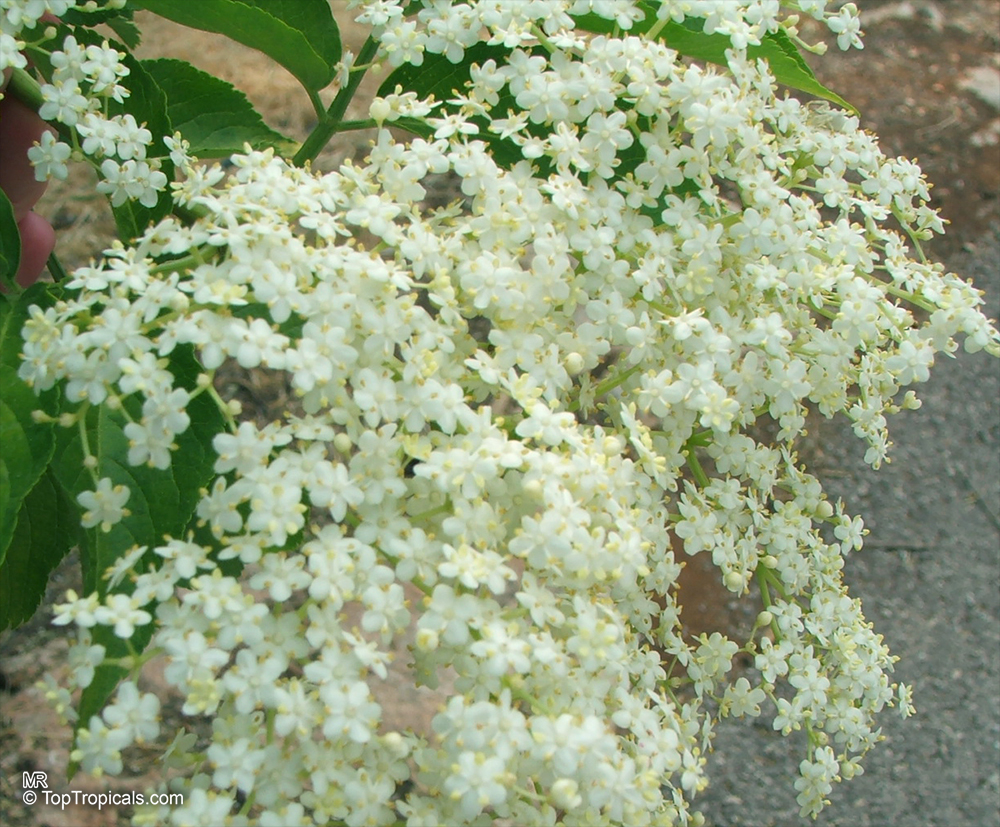Pictogram Guide · Mouse over pictogram for definition
Sambucus sp.
ElderFamily: Adoxaceae















Sambucus sp. (Elder) is a large shrub that typically grows 5-10 feet tall under ideal growing conditions. It likes full sun, but can tolerate semi-shade and prefers regular water, but can also manage with moderate water. In late spring, the shrub is covered with clusters of fragrant white or off-white flowers, with some species having yellow or orange flowers, too. These flowers are attractive to butterflies and hummingbirds.
This ethnomedical plant, also known as elderberry, is grown in USDA zones 3-9.
The berries of elderberry, once ripe, have a sweet-tart flavor and can be used to make pies, jams, and wines. Not only are elderberries edible, but they are also very healthy. They are high in vitamins A, B, and C, antioxidants, and the flavonoid anthocyanin, which gives the berries their dark purple color.
Apart from its edible fruits, the foliage of elderberry has also been used historically for medicinal purposes and to make dyes. In traditional herbalism, it is believed that the leaves and stems of elderberry help to reduce inflammation or fever, regulate and improve digestion, improve cardiovascular health, and reduce stress.
Feather-like compound leaves grace this shrub, and provide outstanding cover and nesting sites for songbirds. It is also a host plant for numerous species of small moths, another reason nesting birds love this shrub.
Native to eastern North America, Elderberry is at home on streambanks or ponds, and is often seen along rural roadsides. While it prefers moist areas, it is quite tolerant of a wide range of soils in full to partial sun.
Typically growing up to 10 feet tall, it can be pruned to control spreading.
Elderberry flowers are self-fertile and only one plant is needed for bountiful fruiting.
One of the best ways to use elderberries is to make them into a syrup or cordial, to make delicious fruity drinks and cocktails (such as this Elderberry Kir Royale). You can also leave the berries to infuse their flavor into spirits. Elderberry gin is particularly tasty.
See Article about Elderberry.
Recommended Fertilizer: SUNSHINE C-Cibus - Crop Nutrition Booster
SUNSHINE-Honey - sugar booster
